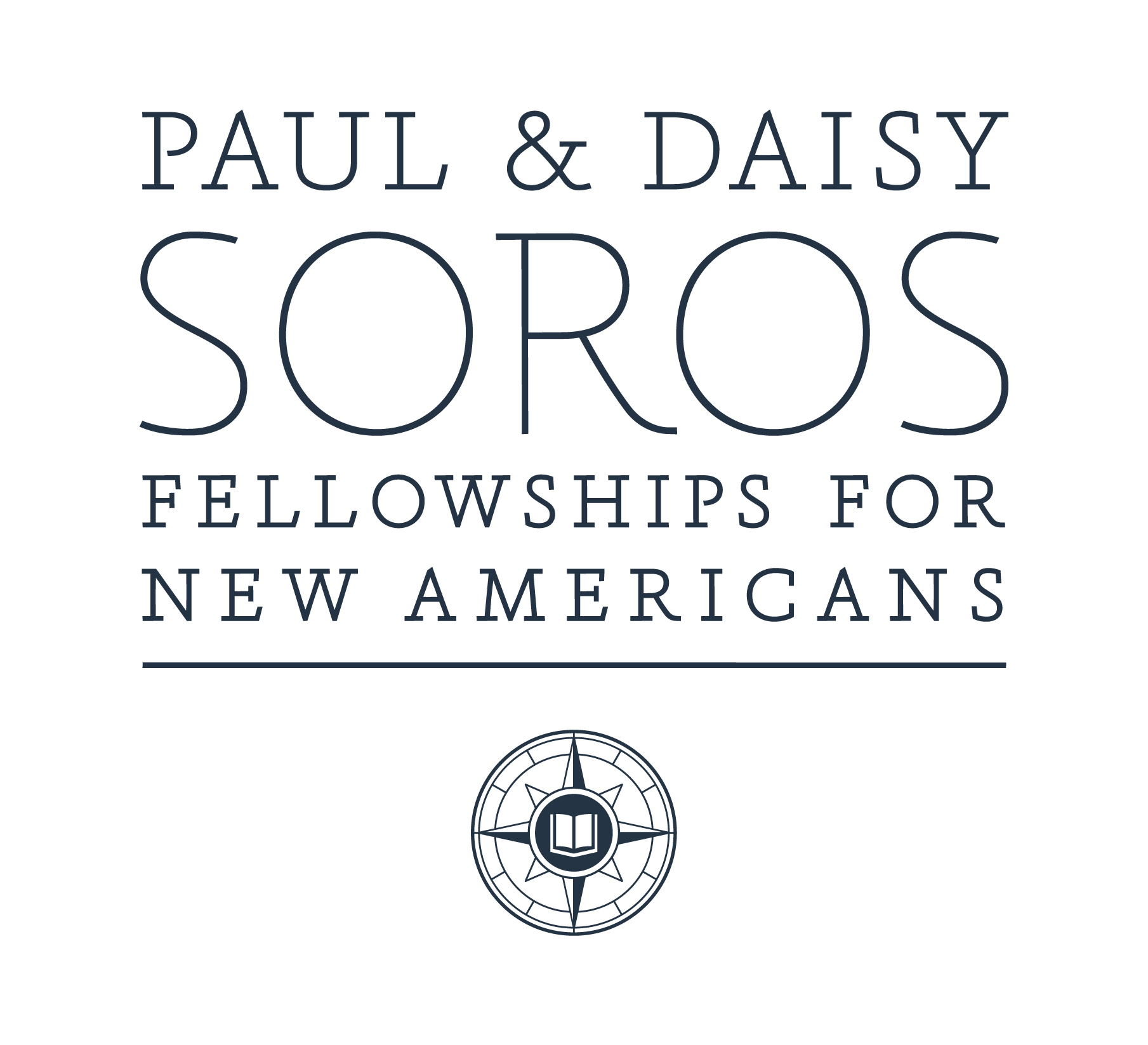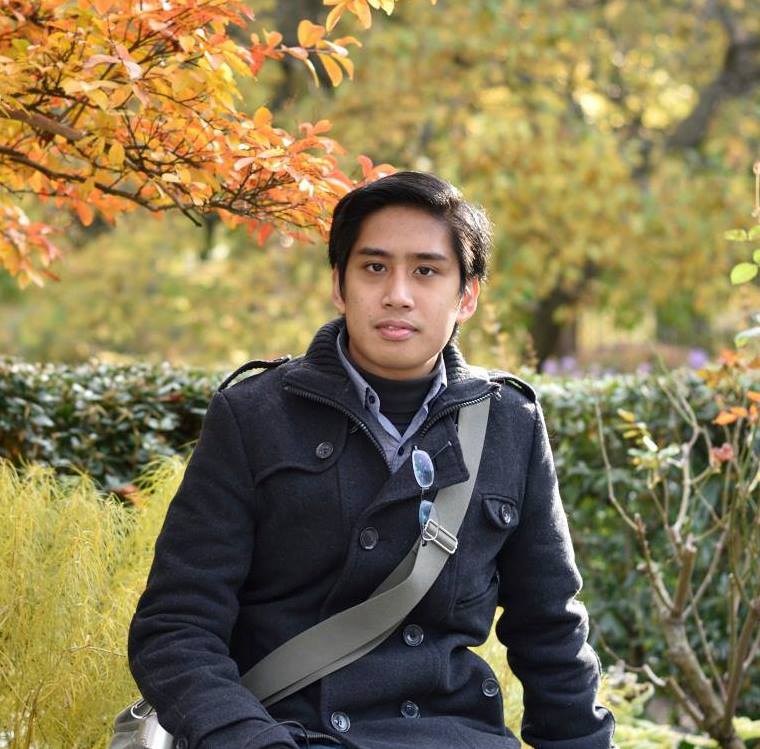The Paul & Daisy Soros Fellowships for New Americans is the premier graduate school Fellowship for immigrants and the children of immigrants. Every year, the organization awards thirty Fellowships to new Americans who are pursuing graduate education in the United States. Each award is worth up to $90,000 (up to $25,000/year stipend; up to $20,000/year tuition support). Awards support up to two years of full-time graduate study in any field, including the visual and performing arts, and at any graduate degree-granting institution in the United States, with the exception of online programs. In addition to funding, Fellows join a community of over 500 New Americans with family origins in over 75 different countries.
The Fellowship program looks for applicants who have demonstrated and sustained accomplishments that show creativity, originality and initiative. In addition, the Fellowship looks for evidence that an applicant’s proposed graduate training is likely to enhance future creativity and accomplishment, that accomplishment is likely to persist and grow, and that the individual has a commitment to responsible citizenship in this country.
We reached out to Mike Alvarez, a recipient of the fellowship award from the Philippines, as he shared how he faced challenges in his life and his journey to get where he is today.
 Mike Alvarez
Paul and Daisy Soros Fellowship Award to support a PhD in Communications
Mike Alvarez
Paul and Daisy Soros Fellowship Award to support a PhD in Communications
The social stigma of mental illness is Mike's subject of investigation. Having spent time in the mental health system himself, he would like to help increase public understanding of psychiatric disorders.
Mike was ten when his family left their comfortable lifestyle in the Philippines to move to a rough neighborhood in Jersey City. The transition proved bumpy, to say the least. After several months, Mike's father went home, leaving his mother as the family's sole support.
Instilled with a love for learning, Mike excelled at school--but a rift was opening up in his mental world. As an undergraduate at Rutgers University, he suffered from debilitating anxiety that turned into horrifying delusions and a suicide attempt. A stay in hospital was a turning point, steering him toward the study of mental health. Mike's senior thesis on the relationship between creativity and suicide won the Charles Flaherty Award and was subsequently expanded into his Master’s thesis at Goddard College.
Mike is currently enrolled in the Communications PhD program at the University of Massachusetts Amherst, where he is studying the phenomenon of cybersuicide. Recognizing the power of personal narratives, he has also completed a memoir about his own journey through mental illness.
1. Where and what do you see yourself doing in the next 5 years?
I have a lot of things lined up for the next 5 years, actually. Aside from completing my dissertation (on cybersuicide) and PhD in Communication at UMass-Amherst, I will also be writing/revising two books. The first book project, titled The Paradox Of Suicide & Creativity, has recently been picked up by Rowman & Littlefield's Lexington imprint. The second is a memoir recounting my past struggle with mental illness. I would eventually like to be a professor at a research-intensive university, and at the same time, be a public intellectual who links research with practice and activism.
2. What has been your greatest struggle/challenge and how did you overcome it?
One of the greatest struggles in my life had been contending with mental illness. Throughout college, I suffered from debilitating anxiety, depression, and paranoia, which culminated in a suicide attempt and admission to a mental hospital. It was a life-altering experience, one that assaulted my self-image as a competent person, because in a mental hospital you are infantilized. I overcame my symptoms through intensive psychotherapy, by being more open about my experiences with loved ones, and by refusing to see myself as a defective human being. When I use the words "mental illness," I mean it in an experiential rather than biological sense.
3. What has been your greatest motivation throughout your life?
When my family immigrated to the U.S., we traded our comfortable lifestyle in the Philippines for a financially and emotionally difficult one. I do not want my family to have any regrets coming here. I have worked very hard to seek opportunities for myself, so that I will one day be in a position to create opportunities for others in need. I want my family's immigration story to be a successful one in spite of all the hardships.
4. Who were your mentors?
I'm fortunate to have so many mentors, people who have been unwavering in their support and have gone beyond the role of advisor to nurture my abilities. One of them is George Atwood, Professor Emeritus at Rutgers University. He has been a friend and mentor for ten years now, ever since he supervised my senior thesis on suicide and creativity. Whenever I experience setbacks, he would always say to me: "Keep on keeping on." I'm also fortunate to have Professors Jarice Hanson and Martin Norden here at UMass-Amherst, who inspire me to take my work in new and surprising directions.
5. How did you hear about the fellowship?
Dr. Craig Harwood, Director of the Paul and Daisy Soros Fellowship Program, visited UMass-Amherst in Fall 2013 to lead an info session. I attended the session, and realizing that I was eligible, decided that I'd give applying a shot.
6. What made you decide to apply for the fellowship?
Several reasons. On the pragmatic end, the Fellowship would absolve me of departmental teaching obligations, which means more time for research, writing, and networking. The Fellowship stipend would also enable me to attend professional conferences and share my research more widely. On the symbolic end, the Soros Fellowship is a mark of distinction, a validation that the work I am doing is poised to make lasting contributions to society.
7. What was the biggest challenge when it came to deciding to pursue the field you're in?
I think the challenge is that my work is inherently interdisciplinary. Initially, I thought I was going to pursue a PhD in Clinical Psychology, which makes sense since my work revolves around suicide, trauma, and mental illness. I got a B.A. in Psychology from Rutgers, and did graduate coursework in psychology also. But then I realized that looking at these issues through the lens of one discipline wasn't going to satisfy me in the long run. I got an MFA in Creative Writing from Goddard College, and now, I'm doing a PhD in Communication at UMass-Amherst, with a dual focus on Technology & Society and Film Studies. These fields have opened up new avenues of inquiry for me--from studying representations of suicide in film and in popular culture, to examining how new media have shaped suicidal behavior.
8. As you gained more experience, how did your priorities change in life?
Having been mentally ill, I have learned to value time and moments of clarity, to make good use of every waking moment. I also try to make more room in my life for creative endeavors. One cannot live a purely intellectual life (or at least I can't). Even scholarly pursuits can benefit from small doses of creativity.
9. What’s been your favorite part about your journey in your personal life and in your career?
With regards to my career, my favorite part is seeing the hard work I've put in bear fruit, and being invited to speak at causes that are meaningful to me. For example, in March, UMass-Amherst had its first Out of the Darkness Walk for Suicide Prevention, where I spoke about my research on cybersuicide and my past struggle with suicidality. It can be so refreshing (and nerve-wracking!) to connect life inside the ivory tower with life outside--to link research with activism, and the professional with the personal.
With regards to my personal life, I am just thankful to be alive, that my life hadn't ended in college when it could have. If it had, I would have denied myself these amazing opportunities, as well as the chance to relish every joyful moment with friends, family and loved ones.
10. Would you recommend the fellowship to anyone else? Why/why not?
I would absolutely recommend that people apply for a Soros Fellowship. They have nothing to lose in applying. And if fortune smiles upon them, they become part of a supportive network filled with truly inspiring people that motivate you to do better and better work.
.












